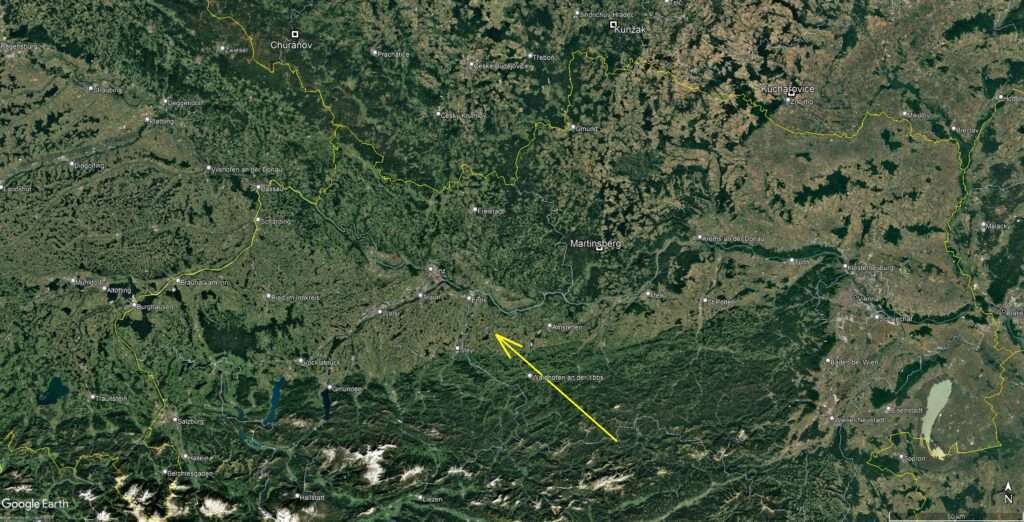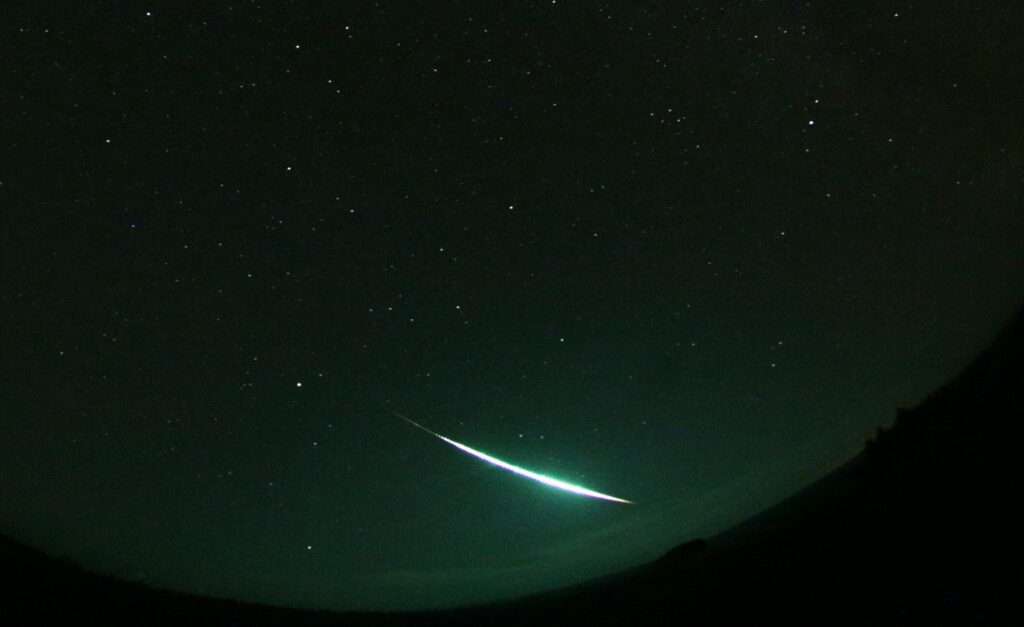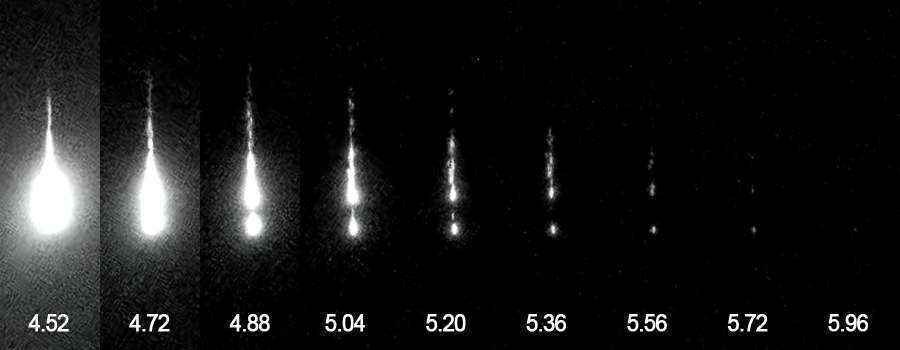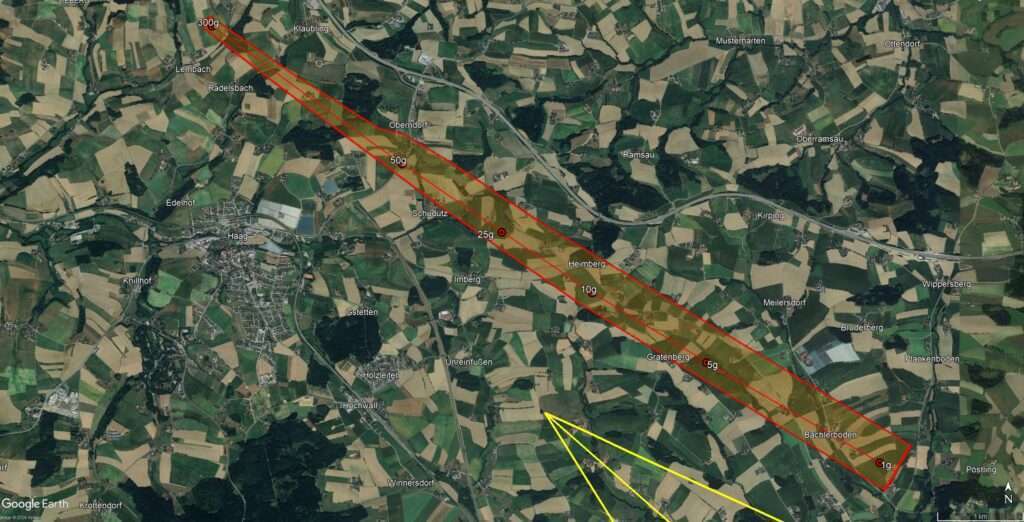On Thursday, 24 October 2024, shortly before 9.30 pm CET, a very bright meteor - a bolide - flew south of our country, i.e. over Austria. At that time it was clear almost all over our territory, as well as over a large part of central Europe, and so this exceptionally bright bolide was seen by a large number of accidental witnesses, some of whom described their observations and sent them to us. So we thank them for their reports and at the same time give an explanation of what exactly happened late on Thursday evening, what caused the phenomenon and where and how it took place.
For the clarification of this very rare natural phenomenon, it was crucial that it was recorded by special instruments that are spread over a large area of Central Europe at the stations of the so-called European bolide network, the centre of which is at the Astronomical Institute of the CAS in Ondrejov. All of our instruments, i.e. photographic and video cameras, precision photometers and other tracking systems were in operation and so we managed to take a large number of records and the most suitable ones, i.e. those from the closest proximity to the bolide's path, were used for its detailed description. The situation is shown in Figure 1where the projection of the entire light path of the bolide is shown and where the positions of the nearest stations of the European bolide network from where the bolide was well observed and also instrumentally recorded are marked.

For this basic but very reliable analysis, we used seven optical records (four photographic and three video) and two radiometric light curves describing the bolide illumination accurately with a high temporal resolution of 5000 samples per second. The most important stations along the bolide's flight path were Martinsberg, Austria, and Kunžak, Kuchařovice and Churáňov in the southern part of our territory. However, due to the high clarity of the bolide and clear skies, we have good usable records from 12 other more distant stations. A snip from the full-sky image of the bolide from the Kunžak station in southern Bohemia is in Figure 2.

In addition to the direct-light records, we were able to obtain detailed spectral records, which is particularly important for determining the composition of this interplanetary body (meteoroid). Thus, thanks to all these records, it was possible to describe in detail and with great precision both the atmospheric orbit of the bolide and its precipitation path in the Solar System, its basic physical parameters, and also the impact region where the remnants of this meteoroid most likely fell.
So what exactly happened on Thursday 24 October 2024 late in the evening over Austria?
Exactly at 21 hours 24 minutes and 38 seconds Central European Summer Time (in the world time, in which the time of the bolide's flight is given worldwide, it is two hours earlier than the CEST, which is valid in our country, and that is why the bolide is referred to as EN241024_192438 in the text and pictures below), a meteoroid with a mass of approximately 55 kilograms entered the Earth's atmosphere. It began to shine at an altitude of 95.9 km above the ground over the eastern Alps west of the important Austrian pilgrimage site of Mariazell (see Figure 1). The body was moving at 17.4 km/s at the time (relatively slow in terms of the collision speeds of these bodies with the Earth) and continued to fly in a northwesterly direction along a path inclined 51.3 degrees to the Earth's surface (azimuth 48.8 degrees west of north) and gradually brightened. The bolide reached a relatively strong maximum brightness of magnitude -13.5 at an altitude of 39.4 km above the Ybbs River near the village of Gleiss and then continued to fly until it extinguished at an altitude of 23.2 km near the town of Haag in Lower Austria. In the second half of the light path, the meteoroid was also already significantly decelerating in the atmosphere and breaking up into fragments (see Figure 3).

He flew the entire 93.7 km long light path in 6.4 seconds. During its passage through the atmosphere, much of the original mass of this meteoroid, about 30 cm in diameter, was consumed, but a relatively large number of small fragments survived the passage and reached the ground. The impact area of these meteorites and their predicted masses are shown schematically in Figure 4. The largest meteorite could be about 5 cm in size and weigh about a quarter of a kilogram.

Before collision with Earth this meteoroid orbited the Sun in a typical asteroidal orbit that was only slightly inclined to the ecliptic plane, i.e. the plane of Earth's orbit. In occultation it crossed the Earth's orbit and came between the Earth's orbit and the orbit of Venus, and in extinction it went farthest beyond the orbit of Mars into the central part of the main asteroid belt. One orbit around the Sun took this meteoroid 2.5 years. This nature of the orbit, combined with the physical properties of the meteoroid as determined from its passage through the atmosphere, means that it was most likely originally a small asteroid fragment originating from the main asteroid belt.
Finally, we would like to thank all the witnesses for their reports on this interesting bolide and Dr. Radmila Brožková from the Czech Hydrometeorological Institute for the wind height data needed to calculate the meteorite impact area.
Pavel Spurný, Jiří Borovička and Lukáš Shrbený, Department of Interplanetary Matter Institute of Astronomy of the CAS
(za)/ gnews - RoZ



